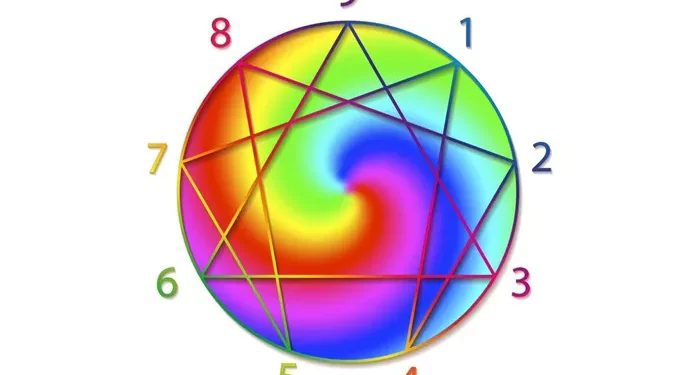Understanding your personality is a journey that can lead to greater self-awareness and personal growth. Two popular systems for exploring personality are the Myers-Briggs Type Indicator (MBTI) and the Enneagram. While MBTI focuses on cognitive functions and preferences, the Enneagram delves into core motivations and fears. Combining these two systems can provide a more comprehensive understanding of your personality. This article will guide you through the process of discovering your MBTI and Enneagram types, helping you to better understand yourself and others.
What is MBTI?
The Myers-Briggs Type Indicator (MBTI) is a widely used personality assessment tool that categorizes individuals into 16 distinct personality types. These types are based on four dichotomies:
- Extraversion (E) vs. Introversion (I): This dichotomy explores where you draw your energy from. Extraverts are energized by social interactions, while introverts recharge through solitude.
- Sensing (S) vs. Intuition (N): This dichotomy examines how you gather information. Sensors focus on concrete, present realities, while intuitives are more interested in abstract possibilities and future potentials.
- Thinking (T) vs. Feeling (F): This dichotomy looks at how you make decisions. Thinkers prioritize logic and objectivity, while feelers consider personal values and the impact on others.
- Judging (J) vs. Perceiving (P): This dichotomy assesses your approach to the external world. Judgers prefer structure and planning, while perceivers are more spontaneous and flexible.
Each MBTI type is a combination of these preferences, resulting in a four-letter code (e.g., INFJ, ENTP).
What is the Enneagram?
The Enneagram is a personality system that describes nine primary personality types, each with its own set of motivations, fears, and behaviors. These types are often represented as points on a geometric figure, with lines connecting them to indicate potential paths of growth and stress. The nine Enneagram types are:
- The Reformer (Type 1): Principled, purposeful, and self-controlled.
- The Helper (Type 2): Generous, people-pleasing, and possessive.
- The Achiever (Type 3): Adaptable, success-oriented, and image-conscious.
- The Individualist (Type 4): Expressive, dramatic, and self-absorbed.
- The Investigator (Type 5): Perceptive, innovative, and isolated.
- The Loyalist (Type 6): Engaging, responsible, and anxious.
- The Enthusiast (Type 7): Spontaneous, versatile, and scattered.
- The Challenger (Type 8): Self-confident, decisive, and confrontational.
- The Peacemaker (Type 9): Receptive, reassuring, and complacent.
Each Enneagram type has a unique set of characteristics, and understanding your type can provide deep insights into your core motivations and fears.
How to Determine Your MBTI Type
Take the MBTI Assessment
The most straightforward way to determine your MBTI type is to take a certified MBTI assessment. These assessments are typically administered by trained professionals and provide a detailed analysis of your personality type. However, there are also many free online versions available, though their accuracy may vary.
Reflect on Your Preferences
If you prefer a more introspective approach, you can determine your MBTI type by reflecting on the four dichotomies. Consider the following questions:
- Extraversion (E) vs. Introversion (I): Do you feel more energized after socializing with others, or do you need time alone to recharge?
- Sensing (S) vs. Intuition (N): Do you focus on the present and concrete details, or are you more interested in abstract ideas and future possibilities?
- Thinking (T) vs. Feeling (F): Do you make decisions based on logic and objective criteria, or do you consider personal values and the impact on others?
- Judging (J) vs. Perceiving (P): Do you prefer structure and planning, or are you more spontaneous and flexible?
By answering these questions, you can start to identify your preferences and narrow down your MBTI type.
Read Descriptions of the 16 Types
Once you have a sense of your preferences, read detailed descriptions of the 16 MBTI types. Pay attention to how each type aligns with your own experiences and behaviors. You may find that one type resonates more strongly with you than the others.
Seek Feedback from Others
Sometimes, it can be helpful to get an outside perspective. Ask friends, family, or colleagues who know you well to share their observations about your personality. They may notice traits or tendencies that you haven’t considered, which can help you refine your understanding of your MBTI type.
How to Determine Your Enneagram Type
Take the Enneagram Test
Similar to the MBTI, the most direct way to determine your Enneagram type is to take a certified Enneagram test. These tests are designed to assess your core motivations and fears, providing a detailed analysis of your Enneagram type. There are also free online versions available, though their accuracy may vary.
Explore the Nine Types
If you prefer a more exploratory approach, start by reading about the nine Enneagram types. Pay attention to the core motivations, fears, and behaviors associated with each type. Consider which type resonates most with your own experiences and inner world.
Reflect on Your Core Motivations and Fears
The Enneagram is deeply rooted in understanding your core motivations and fears. Reflect on what drives you and what you are most afraid of. For example:
- Type 1 (The Reformer): Are you motivated by a desire to be right and to improve the world around you? Do you fear being wrong or corrupt?
- Type 2 (The Helper): Are you motivated by a need to be loved and appreciated? Do you fear being unwanted or unloved?
- Type 3 (The Achiever): Are you motivated by a desire to succeed and be admired? Do you fear failure or being seen as worthless?
- Type 4 (The Individualist): Are you motivated by a need to be unique and authentic? Do you fear being ordinary or insignificant?
- Type 5 (The Investigator): Are you motivated by a desire to be knowledgeable and competent? Do you fear being helpless or incapable?
- Type 6 (The Loyalist): Are you motivated by a need for security and support? Do you fear being without guidance or support?
- Type 7 (The Enthusiast): Are you motivated by a desire to be happy and fulfilled? Do you fear being trapped in pain or deprivation?
- Type 8 (The Challenger): Are you motivated by a need to be strong and in control? Do you fear being controlled or harmed by others?
- Type 9 (The Peacemaker): Are you motivated by a desire for peace and harmony? Do you fear conflict and loss of connection?
By reflecting on these questions, you can start to identify your Enneagram type.
Consider Your Wings and Stress/Growth Paths
Each Enneagram type has “wings,” which are the types adjacent to your primary type on the Enneagram circle. For example, if you are a Type 4, your wings could be Type 3 or Type 5. Understanding your wings can provide additional insights into your personality.
Additionally, each Enneagram type has specific paths of growth and stress. For example, a Type 4 in growth may take on positive traits of Type 1, while in stress, they may exhibit negative traits of Type 2. Exploring these paths can help you understand how your personality evolves under different circumstances.
Combining MBTI and Enneagram
Once you have identified both your MBTI and Enneagram types, you can start to explore how these two systems interact. For example, an INFJ (MBTI) who is a Type 4 (Enneagram) may have a deep sense of individuality and a strong desire for authenticity, while an ENTP (MBTI) who is a Type 7 (Enneagram) may be highly innovative and always seeking new experiences.
Understanding the interplay between your MBTI and Enneagram types can provide a richer, more nuanced understanding of your personality. It can also help you identify areas for personal growth and development.
Practical Applications of Knowing Your MBTI and Enneagram
Personal Growth
Knowing your MBTI and Enneagram types can be a powerful tool for personal growth. It can help you understand your strengths and weaknesses, as well as your core motivations and fears. This self-awareness can guide you in making more informed decisions and pursuing paths that align with your true self.
Relationships
Understanding your MBTI and Enneagram types can also improve your relationships. By recognizing your own tendencies and those of others, you can foster greater empathy and communication. For example, if you know that your partner is an ISFJ (MBTI) and a Type 2 (Enneagram), you can better understand their need for security and their desire to be appreciated.
Career Development
Your MBTI and Enneagram types can also provide valuable insights into your career preferences and potential. For example, an INTJ (MBTI) who is a Type 5 (Enneagram) may thrive in roles that require strategic thinking and independence, while an ESFP (MBTI) who is a Type 7 (Enneagram) may excel in dynamic, people-oriented environments.
Conclusion
Discovering your MBTI and Enneagram types is a journey of self-discovery that can lead to greater self-awareness and personal growth. By understanding your cognitive preferences, core motivations, and fears, you can gain valuable insights into your personality and how you interact with the world. Whether you are seeking personal growth, improved relationships, or career development, knowing your MBTI and Enneagram types can be a powerful tool on your path to self-understanding.
Related toppics:
Is Enneagram or MBTI More Accurate?
How to Take the MBTI Test: A Comprehensive Guide
What Are the Five Most Accurate MBTI Tests Free?




















